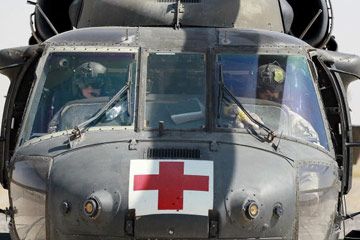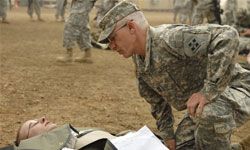Yes, military obligations go hand-in-hand with accepting an HPSP scholarship. The first begins the summer after the first year of medical school. During this time, students head to Brooke Army Medical Center in San Antonio, Texas, to shadow doctors and get a glimpse of their future careers. They receive officer's pay as a second lieutenant throughout this training, and the time served is part of the active duty training. If students can't attend these sessions during the summer, they can attend the program after graduation. Also after graduation, these same students will either begin active duty obligation and advance to the rank of captain, or begin their residency.
Then there's the active-duty service obligation: one year of military service for every year of scholarship. Most doctors fulfill these obligations immediately after completing their residency.
There's also four years of inactive duty, something SFC Jeffrey Cole calls a "paper duty obligation." Finally, there can be an additional obligation for residency and fellowship training, however these details are complicated and vary depending on a number of details.
After the vast amount of time and focus necessary for graduating from medical school, it's no surprise that many students want a top-notch residency program.
How do military programs compare to civilian ones? For the first four years of medical school, students will attend the same programs as other students. This means they can attend any medical school of their choice, as long as it's accredited. Once these students enter their residency program, things get a bit more complicated.
Generally speaking, about 86 percent of students who graduate with an HPSP scholarship are placed in a military residency. More than 90 percent of these get one of their first three choices of location and 100 percent of applicants are placed in their specialty. At the end of the day, however, the needs of the Army trump all, and the opportunity to gain a deferment from Army medical residency isn't always granted even if requested.
Still, major military hospitals provide great training and physicians. While military residencies endeavor to have state-of-the-art equipment on hand, budget limitations can prevent this from occurring, particularly in smaller facilities.
After graduation, these doctors will join the world's largest health care system -- the Army health care team, comprised of the dental, medical service, medical specialist, nurse and veterinary corps (plus the enlisted technicians and civilian employees).
If earning an Army scholarship to pay for medical school is something you're interested in, read the links and resources on the next page.


